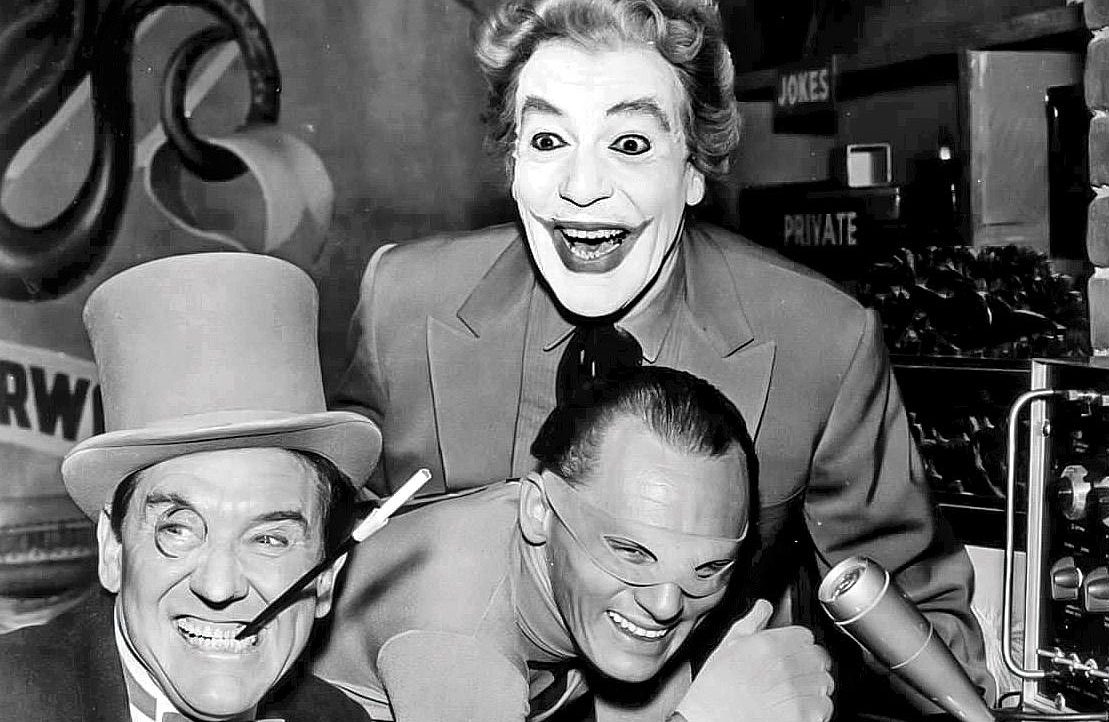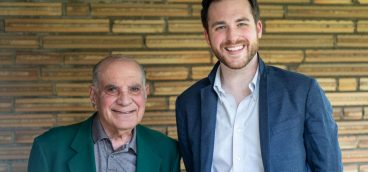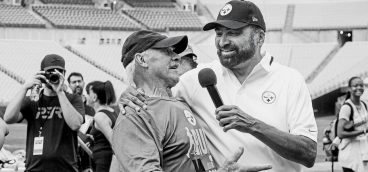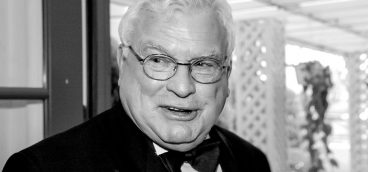Pittsburgh’s Frank Gorshin was the Original Riddler

Frank Gorshin was famous for the many faces he wore. On the Ed Sullivan Show, the master impressionist emulated the likes of Kirk Douglas, Marlon Brando, and Burt Lancaster with uncanny precision, contorting his malleable face and lithe, sinewy body to actually look like, and not just sound like, the people he portrayed. Crowds packed all the top nightclubs in New York, Las Vegas, and Los Angeles to see his act, which consisted largely of his spot-on impressions.
He appeared in more than 80 television programs and films. A classically trained actor, Gorshin began his career in the theater and later starred in numerous Broadway productions. He received a Tony nomination for his portrayal of George Burns in the one-man show, Say Goodnight, Gracie (2002). For younger generations of viewers, Gorshin is best known as “the Riddler” from the original live-action Batman film and television series, which has been widely syndicated in the decades since the show’s 1968 demise. He is also widely regarded as the best man to ever play the role.
The first face that Frank Gorshin wore was that of a kid from Kincaid Street in Pittsburgh’s Garfield neighborhood. He grew up in a quintessential blue-collar Pittsburgh family — tight-knit, tied strongly to their community, and tenacious in their pursuit of the American Dream. Frank Gorshin brought the work ethic and tenacity he learned growing up in hardscrabble circumstances with him everywhere he went in show business. He was a man on the make from the first time he took the stage in Pittsburgh.

Frank John Gorshin Jr. was born on April 5, 1933, in the Lawrenceville neighborhood. His parents were Slovenian immigrants and devoted Catholics — parishioners at St. Irenaeus Church in Oakmont, now part of the Holy Family Parish. Though money was always scarce and the family was forced to move on several occasions, the Gorshins remained a close-knit bunch.
His mother Frances raised the three Gorshin children, eldest Frank Jr., brother Herman, and baby sister Dottie. At night, she parlayed her prowess as a seamstress into work for some of the city’s best department stores. Frank Sr. toiled for the Pennsylvania Railroad to support his growing family. He had learned the trade of a mechanic and took great pride in the manual skills that made it possible for him to support his family, even in the depths of the Great Depression.
The closeness of the Gorshin family was matched by their devotion to their Slovenian heritage. The family belonged for years to a local Slovenian singing society based in Garfield, which kept the songs and traditions of the old country alive in their new home.
Frank Jr. loved the movies from an early age. As a teenager, he landed a job as an usher at the dearly departed Sheridan Square Theatre in East Liberty, enabling him to get paid for catching up on all the latest films. While working at the movie theater, he developed the ability to mimic the stars of the silver screen. He practiced his impressions at work during repeated viewings of the week’s films. At school, he cut up for his classmates at Peabody High.
At age 17, Gorshin brought his impressions of Al Jolson and Richard Widmark with him to a talent show at the Enright Theater. He won, bringing down the house with his uproarious takes on the stars of the day. The grand prize was a week’s worth of engagements opening for actor and comedian Alan King at The Carousel, a local nightclub owned by “Little” Jackie Heller, a well-known vaudevillian originally from Pittsburgh.
Gorshin’s first big break wasn’t to be, however. The night of his first performance, his kid brother Herman was killed in a car accident by a drunk driver. The heartbroken young comedian could barely get through his sets, enveloped in grief.
Following his graduation from Peabody, Gorshin learned the formal trade of a stage performer. He was accepted into the School of Drama at what became Carnegie Mellon University and enrolled in the fall of 1950.
While at Carnegie Mellon, Gorshin emceed variety shows put on by fraternities and sororities. He appeared in numerous student theater and drama department productions. But after two years, he was drafted into the Army during the Korean War. He worked as an entertainer in a special unit in Korea that aimed to boost the morale of the troops.
A contact in the service put him in touch with an agent, and Gorshin chose not to return to college, disappointing his parents who had hoped he would be the first person in the family to get a college degree.
He spent the back half of the 1950s and early 1960s starring in B-movies while opening for major nightclub acts in Las Vegas. At different times, he opened for Red Skelton, Bobby Darin, and Judy Garland.
Despite his hectic schedule, Gorshin returned home as often as he could, typically by car since he hated to fly. On one occasion, these cross-country road trips nearly cost him his life. In 1957, he tried driving straight from Pittsburgh to Los Angeles to audition for a role in “Run Silent, Run Deep.” He fell asleep at the wheel and nearly died in the crash, breaking his skull and spending four days in a coma.
Though Gorshin did not get the role in the smash hit World War II picture, his name would soon become known to most every television viewer, thanks to Ed Sullivan. Beginning in 1962, Gorshin began performing his eerily accurate impressions on Sullivan’s Sunday night variety show. He became one of Sullivan’s most popular recurring guests. The appearances on the “Ed Sullivan Show” made Gorshin one of the country’s most in-demand live performers for the rest of his life.
Gorshin appeared on the most famous episode in the history of the “Ed Sullivan Show,” possibly in the history of television. On Feb. 9, 1964, Gorshin followed the Beatles on the CBS Television Studio 50 stage after their American debut. The Beatles opened the show with performances of “All My Loving,” “Till There was You,” and “She Loves You.” Gorshin then treated the crowd to renditions of his cornucopia of characters giving political speeches, a nod to the 1964 presidential campaign, which was then in its early stages.
In the midst of his run on Ed Sullivan, Gorshin won the role of “the Riddler” in a live-action television series based on the Batman comic books. From the outset, Gorshin stood out on the fun but undoubtedly campy program. He brought a psychology and physicality to his role that was unmatched by the show’s other henchmen and henchwomen, let alone its babyfaced protagonists.
Gorshin brought “the Riddler” to life by assembling bits and pieces from his repertoire. He donated his own cackling laugh to the character while giving “the Riddler” some Burt Lancaster intensity and Jimmy Cagney menace. Gorshin’s “Riddler” was a cerebral sociopath who moved like a gymnast. He was an evil, unpredictable genius. He was the only actor on “Batman” ever nominated for an Emmy.
Gorshin continues to stand out among the men that have portrayed “the Riddler.” Whether it was Jim Carrey in “Batman Forever” (1995), Cory Michael Smith in “Gotham” (2014-2019), or Paul Dano in “The Batman” (2022), everyone who has donned the Riddler’s purple mask and green outfit seemed as if they were performing in a skit based on Gorshin’s performance. None proved capable of becoming Frank Gorshin. They weren’t nearly the mimic that the kid from Garfield was.
Following “Batman,” Gorshin tried his hand on Broadway, performing in “Guys and Dolls” in the early 1970s while continuing to make frequent guest appearances on television and in film. He enjoyed his greatest success in theater in the one-man show, Say “Goodnight, Gracie “(2002), a coming-of-age story based on the life of George Burns. Rupert Holmes, best known for his “Escape (The Pina Colada) Song,” wrote the tender and humorous show. It was material well suited to Gorshin. The actor shone as George Burns, earning a Tony nomination for best actor while the show earned a nomination for best play.
Amid his greatest critical success, Gorshin faced significant health struggles. He battled for years with emphysema and eventually developed lung cancer. For most of his life, he had been a heavy smoker. In April 2005, Gorshin fell ill on a flight back to Los Angeles after a performance of his one-man show in Memphis.
He had contracted pneumonia and never recovered. He died several weeks later on May 17, 2005, with his wife Christina and son Mitchell by his side. His sister Dottie arranged a memorial for him at St. Irenaeus for his friends in the community. He was buried at Calvary Catholic Cemetery in Hazelwood. His headstone depicts Gorshin in silhouette, standing on stage far away from the microphone. Beneath his name and dates reads the question, “What does it all mean?” a reference to his days as the Riddler.












